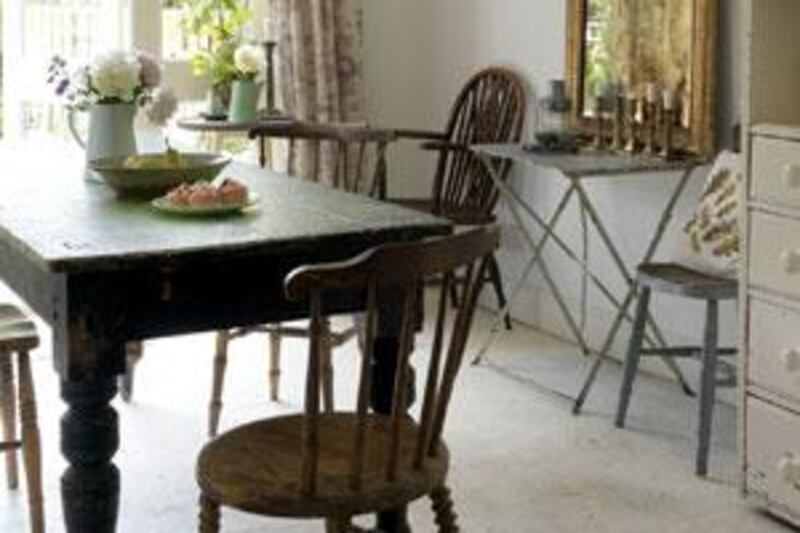I love the old-new design aesthetic that has been fashionable for a while: it seems a great way to give my home an individual feel and a distinctive atmosphere without slavishly following trends. It seems to take a certain confidence though and my apartment is acutely modern - where do I start? With a little clever adjustment the old-new look, which mixes the antique with the modern and the shabby with the smart, can be made to work with any style and size of home. The important thing is to think of it less as a particular look than as an approach that makes the most of what you've got.
Building any unique look takes time and it has the most charm if it is built organically and with a genuinely relaxed feel. It is as much about shopping as styling. Cast your eye far and wide for inspiration: read extensively and talk to people whose houses you admire. As with any look that goes beyond trends, this is more about exposing your eye to as much as possible to define what you like, rather than simply copying someone else's style.
The old-new trend is about having pieces that have a certain faded elegance, which can work very well against a modern background, especially if you keep the main decor as white and simple as possible. For instance, if you have blinds instead of curtains, try a delicate chandelier and lots of pretty vases for a lovely contrast in which the prettiness softens the modernity. You can find great things in the most surprising places - go to car-boot sales, discount stores and even hardware stores. Auctions have great prices at the moment, and remember eBay, which is particularly good if you already know the brand you want.
Remember to maintain what you already have - a fundamentally tidy foundation is essential when you're going for such a detail-focused look, so prune constantly and keep an eye on what needs reviewing and repairing, and what can be reused and repurposed. The more you look at everything, the more you will learn what you like. Consider spending more on the architecture of a room and the way it works, not the furniture: you can dramatically change the feel of a room without changing the furniture and furnishings at all, by knocking down shelves or removing built-in cupboards, for instance. Again, this look is as much about your approach as what you buy.
Always see if you can manage with what you have rather than buying something new: consider recovering an old sofa or repainting a table. Most pieces gain a whole new lease of life if they are simply repainted with a fresh coat. The only rule to bear in mind is not to paint antiques. If you find one piece you adore but it seems too costly, be thrifty about the rest of your home: spend on a piece you really like, such as a beautiful chandelier, and economise around it.
Above all be patient. This kind of look takes a while to build; don't place pressure on yourself to get things done by a deadline. We all often find ourselves fixating on having a certain object ready for a certain time or event, but nobody else notices if that new mirror is not there or if you're using old chairs instead of shiny new ones.
Collections of objects always look interesting and chic. Focus on something that you like, perhaps white china or pressed glass, mixing pieces but keeping to a common theme. Mix and match fabrics, placing detailed patterns against something plain. Go for expensive, perhaps antique fabrics, in small amounts on a chair or a cushion, and something less expensive on bigger areas. Buy only what you love and without preconceived rules.
Like much of the best home decoration, this is more about putting time and love into your house than money. And remember that the nicest homes are always changing; never feel as if you have to do it all at once.
Emily Davies was talking to Alexandra Campbell, an interior-design author and home-styling consultant. Her publisher can be reached at +44 207 025 2285 or at www.cicobooks.co.uk





